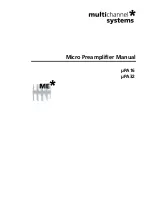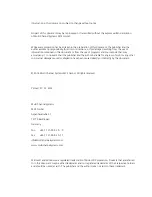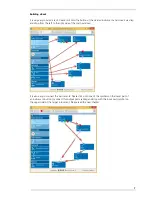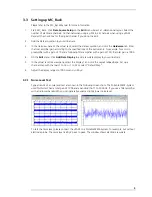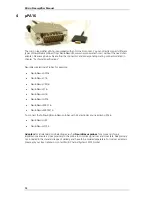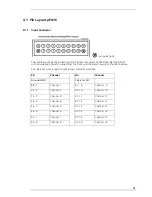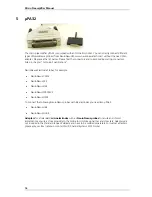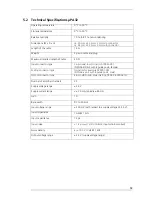
5
3.
Connect the
reference electrode REF
to the reference input of the micro preamplifier. Generally,
a reference electrode is inserted into non-active tissue of the experimental model. The reference
electrode should be identical to the recording electrode so that both electrodes see the same
background noise. This is necessary because despite the grounding, the animal’s body often has
not exactly a potential of zero, due to the electrode impedance, for example. The background noise
is then subtracted from the recording signal, increasing the signal to noise ratio. Please note that this
may not work if the complete setup is not properly grounded.
4.
(Optional) If two reference electrodes are used, connect the second electrode to the free reference
input. Otherwise, leave it free. It is generally not necessary to use a second reference electrode. It can
be used to enlarge the surface area of the reference, though.
5.
Connect all unused recording channels to the
GND input
or to the
reference electrode,
if ground and
reference are short circuited, to avoid picking up noise. As the total amplifier gain generally lies in the
range of 1000, even very small noise signals may generate high noise signals.
6.
If you are not using a Faraday cage, it might be necessary to shield the complete setup with aluminum
foil or similar to prevent electrical interference from the outside. Connect the aluminum foil to the
ground of the setup, for example, the metal table.
Troubleshooting: If you observe problems with noise, check that the ground of the
setup
is connected
to exactly the
same ground
as the
data acquisition computer
. For example, connect the metal table
to the ground / earth wire of a free power outlet (of the same electrical system), as the computer is
generally connected to ground / earth via the power plug, too. Also, connect the
data acquisition
computer’s metal case
with a
thick ground wire
to the
ground
of the
setup
, for example the metal
table, preferably with a 4 mm plug.

